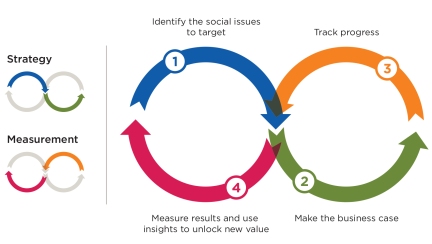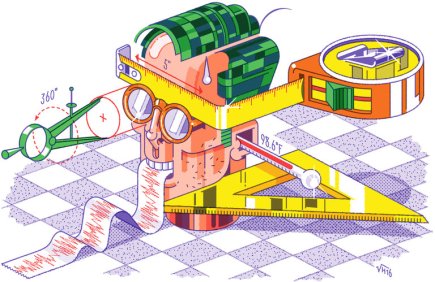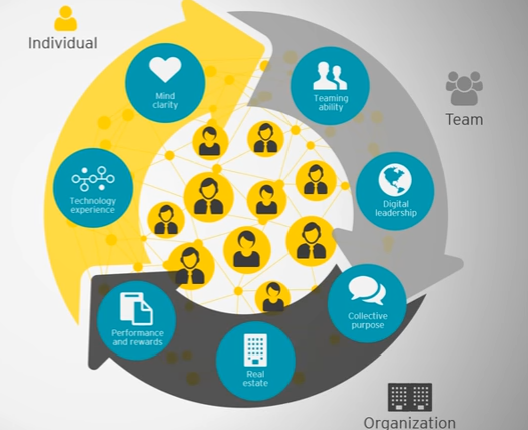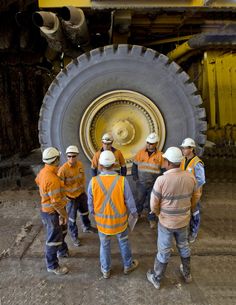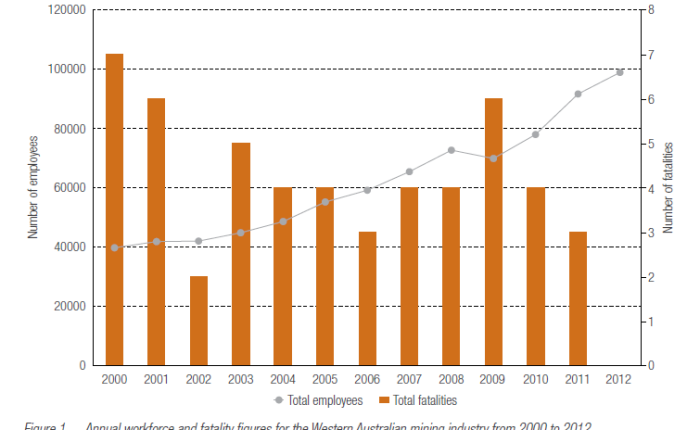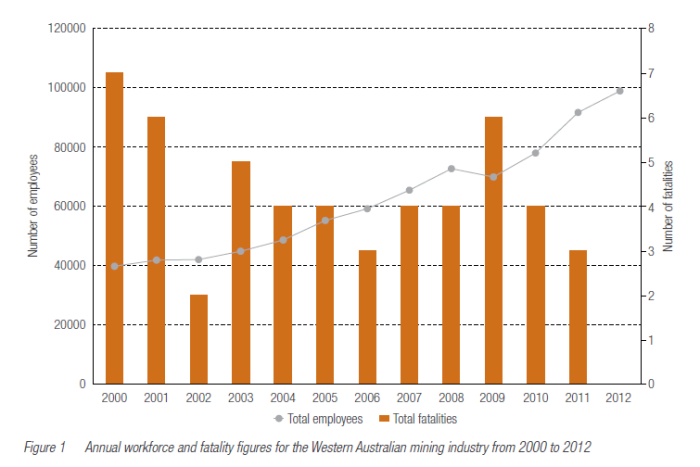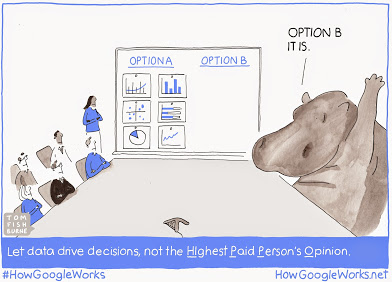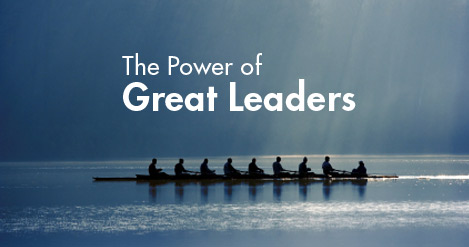Congratulations for the promotion, now hire your replacement… One of the best things to hear coupled with the unknown, fully appreciating that you have to find another you. But wait, is that what you really want, or need?
Been here, done this and have the scars to prove it. I was fortunate that I did my undergrad degree in HR / Management so had the theory and process down pat. Doesn’t help you choose the best candidate for the role, however, if anything it gave me a false sense of security, also it didn’t help the labour pool I was looking in.
My initial thoughts upon reflection for who I needed in the role was, easy, find another you and you can do your bosses job. The issue was, I was living and thinking like the past manager and assuming I could do the role like he did, rather than make the role my own and be comfortable in my own style, knowledge and delivery.
This took me away from thinking what I needed from the candidate to round the Safety and broader project team out and support myself thirdly. I was also at my own perceived disadvantage as typically if I’m in a room of Senior Safety people I am normally the youngest by typically ten years, I agonised over would anyone want to work for me?
This was laughable (yet not at the time!) as I already had direct reports (including older colleagues than me), yet in my mind, as I progressed in the organisation they knew me, respected my abilities and worked in with my style. Would the new person be the same, would they want to play politics, would they undermine me? You’ll note at this stage it’s all me, me, me!
The first couple of interviews were completed with the outgoing Safety Manager, who struck the balance well between adding a little value but not too much to overshadow the process. He also gave legitimacy to the process as his rapport with the Site Manager evened out any thoughts he had around any perceived inadequacies. It allowed me to have a free hand interviewing candidates knowing that a less biased, more objective person was there to ask any questions he felt I needed to hear the answers to. It also iterated my preference to have two subject matter experts in the interview process of differing experience so more than one interpretation can be made of an individual’s performance.
We interviewed a set of shortlisted clients from HR and some he sourced from his network or those we knew. Whilst we identified one strong contender early on, the process highlighted to me:
- You candidate pipeline (and funnel where they enter) is everything, it’s not enough to rely on traditional ads and the recruitment function. It is your role as the hiring manager to own this process and build a network you trust. This is what LinkedIn is for as well as other non-electronic networking methods to maintain your network. Most managers leave this in others hands and are passive in building their network and potential team member (and boss!) pipeline. Remember better candidate pools equal better shortlists, less energy spent in qualifying candidates and a better end hire that you want, not what the market has
- Hire people that compliment the team first, not you. Also stay away from hiring yes people and (even if subconsciously) people of lower ability, age, experience than yourself. You are not leading as you are the most technical adapt. What you into the chair won’t get you into the next chair.
- If they aren’t the right candidate yet they are the best of the rest of the candidate pool don’t hire them. It will save you pain in the long term. We selected the candidate who would be perfect for our team and project but during the period he chose to take another opportunity. We didn’t then make an offer to the second best candidate, we instead developed capability internally. Back your judgement and your people.
Attraction, selection and recruitment is a wide-ranging area which, if you want to manage and lead people, you have to develop knowledge and skills in this area. Think of it as working upstream vs downstream, we all know that in design we have a lot strong lever to impact future time periods. Recruitment is the upstream and design element of your team’s development. 
Recruitment is something that you get more comfortable over time, the more interviews you do and are in. My suggestion if you want to level up quickly in this area hunt internally for the besti n-house recruiter you have and ask them to sit on interviews as an observer. In saying this though, I sat next to the best recruiter I have worked with for three months and it was the actions and conversations she had between interviews which was the impactful conversations (man could she listen and build instant rapport). The interview at the end was merely for the hiring managers benefit, she already had the right candidate attracted, screened, interviewed and promoted with a real job projection ahead of time.
In failing this, strike up a conversation with a specialist safety recruiter from a consultancy as they are typically happy to outline their process to you and will often share tips to build rapport and a relationship. If at the end of this you still dont find yourself confident you can always engage their services and sit with them through the process and learn. Dual benefit for your investment.
I’m happy to share my thoughts on recruitment and interviewing if you have any questions or want to hit me up. It’s a passion of mine (as is most else I write on) and I’m happy to share my interview questions bank for prep or use. Happiness is finding (or being found by) a team and organisation which align to your values and purpose, something which we often neglect to our own (and teams) detriment.
 I’ve had two transitions in the past 5 years and each time set out a meticulous document which outlined with as much detail as possible how I managed and led the teams I was associated with. This took at least 50 hours each at best guess. Unfortunately prior to writing these detailed documents I failed to ask the person whom I was handing over to what was the best method for THEM to get across the context of the role. Subsequently, both individuals rarely relied upon the document and preferred to rely on the verbal and coached handover elements of the transition, followed up with differing degrees of follow up via phone call.
I’ve had two transitions in the past 5 years and each time set out a meticulous document which outlined with as much detail as possible how I managed and led the teams I was associated with. This took at least 50 hours each at best guess. Unfortunately prior to writing these detailed documents I failed to ask the person whom I was handing over to what was the best method for THEM to get across the context of the role. Subsequently, both individuals rarely relied upon the document and preferred to rely on the verbal and coached handover elements of the transition, followed up with differing degrees of follow up via phone call. With my past transition, it was very much more face time, bringing individuals into meetings and relationships earlier and providing a warm handover a full week prior to me leaving (Can’t take credit for that, was a good thought from the WHS Director). Yet also I have brought individuals and the team a longer much faster than previous roles which made the transition so much smoother (it’s fantastic when you have growth orientated individuals in your team who are always looking to serve more people). Carving off part of my role to my likely successor even before I left gave them a chance to know the role and characters well prior to officially taking the role. This changed the nature of our handover to stretch & vision vs nuts & bolts.
With my past transition, it was very much more face time, bringing individuals into meetings and relationships earlier and providing a warm handover a full week prior to me leaving (Can’t take credit for that, was a good thought from the WHS Director). Yet also I have brought individuals and the team a longer much faster than previous roles which made the transition so much smoother (it’s fantastic when you have growth orientated individuals in your team who are always looking to serve more people). Carving off part of my role to my likely successor even before I left gave them a chance to know the role and characters well prior to officially taking the role. This changed the nature of our handover to stretch & vision vs nuts & bolts.
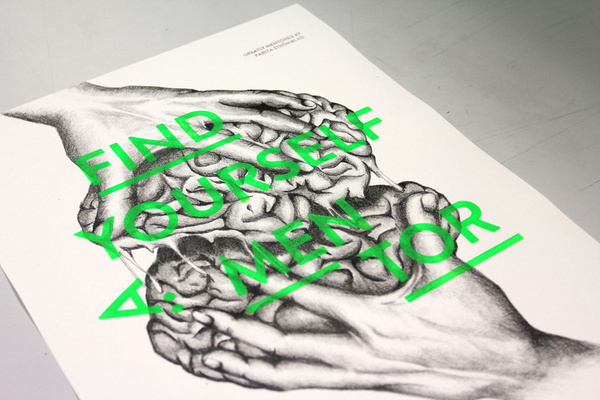
 Yet what happens when we skip a crucial step in our learning scaffold? How do we look to overcome this, especially if your new role in the organisation is above where this learning can be practised without judgement, to effectively allow you to fail, and if needed, fail often?
Yet what happens when we skip a crucial step in our learning scaffold? How do we look to overcome this, especially if your new role in the organisation is above where this learning can be practised without judgement, to effectively allow you to fail, and if needed, fail often? This isn’t just for managers if you are reading this thinking you have to wait until you get the nod. The standard pace is for chumps and if you want to grow quickly, involve others in the journey. Be bold, ask first and seek people who are like-minded.
This isn’t just for managers if you are reading this thinking you have to wait until you get the nod. The standard pace is for chumps and if you want to grow quickly, involve others in the journey. Be bold, ask first and seek people who are like-minded.

 My little fella first used the term “I” over the weekend. He scaled the last climbing obstacle at our local shops unassisted. His words “I did it” resonated and made me reflect on how often I see it at work…
My little fella first used the term “I” over the weekend. He scaled the last climbing obstacle at our local shops unassisted. His words “I did it” resonated and made me reflect on how often I see it at work…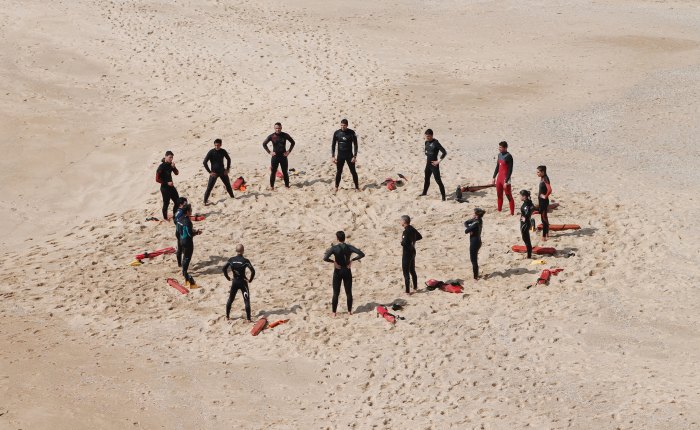
 Discussions with HS Managers are wide ranging depending on their knowledge of general management and leadership base knowledge and typically start with the Managers current practise. Often this resembles some key performance indicators for audit and inspection activity only or other numerical, binary metrics. But hey, it’s a start and something to build from!
Discussions with HS Managers are wide ranging depending on their knowledge of general management and leadership base knowledge and typically start with the Managers current practise. Often this resembles some key performance indicators for audit and inspection activity only or other numerical, binary metrics. But hey, it’s a start and something to build from! In the past teams have successfully and unsuccessfully used methods such as surveys, 360-degree reviews and the like to help create a snapshot as to the health of a team based upon internal and external data sources. Most have been externally facilitated which to me represents a lost opportunity to drive reflection, acknowledgement and improvement by the actual team rather than ‘on’ a team.
In the past teams have successfully and unsuccessfully used methods such as surveys, 360-degree reviews and the like to help create a snapshot as to the health of a team based upon internal and external data sources. Most have been externally facilitated which to me represents a lost opportunity to drive reflection, acknowledgement and improvement by the actual team rather than ‘on’ a team. Both are backed by their internal research and are externally validated and improved by the consistent seeking of feedback from internal and external users. They include generous and detailed how-tos and are free to view, download, use and adopt! These should be a go to and starting point for any H&S Manager or leader interested in the topic.
Both are backed by their internal research and are externally validated and improved by the consistent seeking of feedback from internal and external users. They include generous and detailed how-tos and are free to view, download, use and adopt! These should be a go to and starting point for any H&S Manager or leader interested in the topic. As a side note, the sharing and transparency of internal processes are gathering momentum with Laing ORouke releasing their
As a side note, the sharing and transparency of internal processes are gathering momentum with Laing ORouke releasing their 
 What struck me first was, that is an awesome short term goal to have and kudos for identifying and putting energy into it. I think anybody at any stage of their career could come back to this reflection point.
What struck me first was, that is an awesome short term goal to have and kudos for identifying and putting energy into it. I think anybody at any stage of their career could come back to this reflection point. My single biggest tip which rarely fails to take the heat out of discussions or generate some positive reflection is bringing the concept of time into discussions ie past, current and future context. I’ve found many people will regularly defend their past actions with exuberance yet will freely help find a better way if we have to re-complete or help others with the same task, especially when true responsibility and opportunity is afforded.
My single biggest tip which rarely fails to take the heat out of discussions or generate some positive reflection is bringing the concept of time into discussions ie past, current and future context. I’ve found many people will regularly defend their past actions with exuberance yet will freely help find a better way if we have to re-complete or help others with the same task, especially when true responsibility and opportunity is afforded.


 Most think they know how to manage and lead, yet largely I find most managing through trial and error or application of a single theory or model.
Most think they know how to manage and lead, yet largely I find most managing through trial and error or application of a single theory or model. One thing I have found that’s a great lever for enabling changing is exposing others to different perspectives and having them be tolerant of people with different or diverse perspectives. It is when we hold fast to one perfect answer and an adversarial mindset that we alienate people (and their perspectives) which cause them then to have to fit in or disengage or even leave!
One thing I have found that’s a great lever for enabling changing is exposing others to different perspectives and having them be tolerant of people with different or diverse perspectives. It is when we hold fast to one perfect answer and an adversarial mindset that we alienate people (and their perspectives) which cause them then to have to fit in or disengage or even leave! Most of the above happens below the water line (consciousness) and are largely affected by both social and individual factors /bias. To do a quick exercise take the people whom you have the 5 strongest relationships; do you share their propensity to change your mind based on new information or do you tend to feel secure with your understanding of the world and rarely change your stated positions? Likely they will display similar patterns of behaviour to yourself. The same occurs within teams in organisations and entire industries.
Most of the above happens below the water line (consciousness) and are largely affected by both social and individual factors /bias. To do a quick exercise take the people whom you have the 5 strongest relationships; do you share their propensity to change your mind based on new information or do you tend to feel secure with your understanding of the world and rarely change your stated positions? Likely they will display similar patterns of behaviour to yourself. The same occurs within teams in organisations and entire industries. I don’t know, for now, to be honest. Typically I would say that to combat a lack of participation it would be through visible, felt leadership yet I’m not sure. It does come full circle to my proposed thrust, however; how afraid are we as leaders in safety (not safety leaders) to fail, afraid to show being incomplete or less than what our image or egos are? How many of us are open and transparent to having a coach or taking short courses or watching YouTube or reading in different fields, or even letting people know that ‘we don’t know’ and need to find out?
I don’t know, for now, to be honest. Typically I would say that to combat a lack of participation it would be through visible, felt leadership yet I’m not sure. It does come full circle to my proposed thrust, however; how afraid are we as leaders in safety (not safety leaders) to fail, afraid to show being incomplete or less than what our image or egos are? How many of us are open and transparent to having a coach or taking short courses or watching YouTube or reading in different fields, or even letting people know that ‘we don’t know’ and need to find out? The above is messy, a little less coordinated than I would like (Sorry
The above is messy, a little less coordinated than I would like (Sorry 
 To continue the effects of the priming exercise it’s useful to have a symbol which neatly summarises the bias, it’s effect and prompts you to re-centre every time you send or hear it (advertising uses it to great effect – think mascots). An example that I have used in the past of a gorilla as a symbol of those high consequence /low likelihood risks has worked extremely well and had sustainable benefits. This makes the concept sticky and uses language that lands and resonates with people. A human brain is a shortcut machine, so let’s give it one.
To continue the effects of the priming exercise it’s useful to have a symbol which neatly summarises the bias, it’s effect and prompts you to re-centre every time you send or hear it (advertising uses it to great effect – think mascots). An example that I have used in the past of a gorilla as a symbol of those high consequence /low likelihood risks has worked extremely well and had sustainable benefits. This makes the concept sticky and uses language that lands and resonates with people. A human brain is a shortcut machine, so let’s give it one.



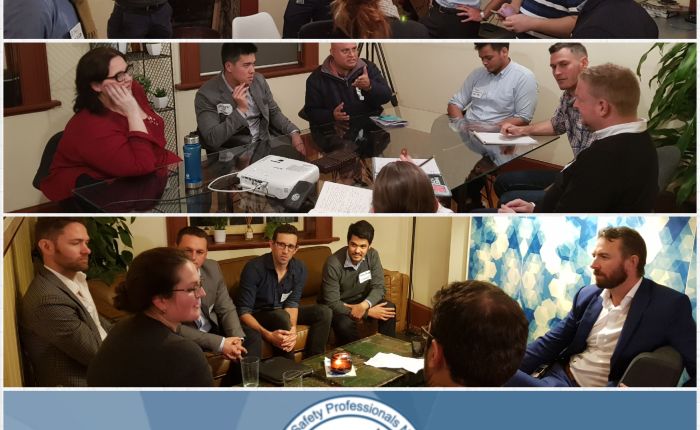
 One of the key takeaways for me was the comment about how overwhelming it is for people undertaking their first Safety role. This was even evident when a work placement was part of the learning process.
One of the key takeaways for me was the comment about how overwhelming it is for people undertaking their first Safety role. This was even evident when a work placement was part of the learning process. I reflect back on my first safety role and it was very similar, I’m sure others will agree. Would like to strongly point out here that normal doesn’t mean it should or always will be this was. But then how can we change?
I reflect back on my first safety role and it was very similar, I’m sure others will agree. Would like to strongly point out here that normal doesn’t mean it should or always will be this was. But then how can we change? Which comes full circle to the title of the article, the more we can be transparent as to what the world of work, industry and business is before that first day of work hits, the better chance the flood of sensory new experience is a garden hose rather than the current boiling fire hose we have now. Hopefully, this may have a positive byproduct and stem some of the leaky pipeline currently in the industry affecting diversity.
Which comes full circle to the title of the article, the more we can be transparent as to what the world of work, industry and business is before that first day of work hits, the better chance the flood of sensory new experience is a garden hose rather than the current boiling fire hose we have now. Hopefully, this may have a positive byproduct and stem some of the leaky pipeline currently in the industry affecting diversity.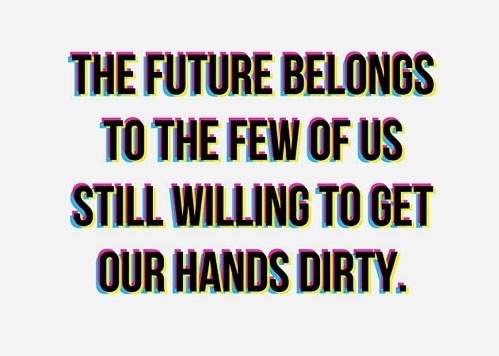
 Most feedback if we choose to acknowledge it comes from non-direct sources which are rarely aimed at us. Newspaper editors never got sat down by their leaders and said our business model is on the way out, neither did Australian manufacturing before the cuts started. But were there indicators or feedback, of course, people said: “The writing was on the wall”. So why then did many fail to heed the feedback of what was coming?
Most feedback if we choose to acknowledge it comes from non-direct sources which are rarely aimed at us. Newspaper editors never got sat down by their leaders and said our business model is on the way out, neither did Australian manufacturing before the cuts started. But were there indicators or feedback, of course, people said: “The writing was on the wall”. So why then did many fail to heed the feedback of what was coming? It’s easy to state the problem and of course, you can feel this creeping up the back of your neck before cognitive dissonance takes hold and you reject this information I want you to try something new. Trial doing a lesson learnt via video, make a whiteboard explainer video or conduct an interview with an influential line manager to convey what goes right in your organisation. Use your existing intranet as a hub to broadcast this trail and see how people react, chances are you just might find the groundswell and motivation to keep going and refine further. Hell, others may even want to get in on the action! That’s using feedback as fuel and not
It’s easy to state the problem and of course, you can feel this creeping up the back of your neck before cognitive dissonance takes hold and you reject this information I want you to try something new. Trial doing a lesson learnt via video, make a whiteboard explainer video or conduct an interview with an influential line manager to convey what goes right in your organisation. Use your existing intranet as a hub to broadcast this trail and see how people react, chances are you just might find the groundswell and motivation to keep going and refine further. Hell, others may even want to get in on the action! That’s using feedback as fuel and not That’s using feedback to your advantage, as fuel and not friction. Don’t be an expert in the status quo, be a learner with one eye always looking in the future.
That’s using feedback to your advantage, as fuel and not friction. Don’t be an expert in the status quo, be a learner with one eye always looking in the future.
 I’ve seen many managers complete fantastic inspections, audits and discussions with crews, only to sour the effect by not following through to make sure action is taken after they leave. It’s a simple process to follow through and follow up, but in busy schedules sometimes people get left behind.
I’ve seen many managers complete fantastic inspections, audits and discussions with crews, only to sour the effect by not following through to make sure action is taken after they leave. It’s a simple process to follow through and follow up, but in busy schedules sometimes people get left behind. From the Summary of the paper: Many companies understand that good management requires senior managers to spend time with front line workers. Some companies build into performance agreements for senior managers a requirement that they conduct a certain number of such site visits each year. The challenge is to make productive use of these visits. Safety is often a focus for visiting VIPs, but too often safety is understood to be a matter of “slips, trips and falls”, rather than the major hazards that can blow the plant or the rig apart. This paper will examine a VIP visit made to the Deepwater Horizon rig by senior managers from BP and from the rig owner, Transocean, just hours before the explosion. It will argue that, despite their best of intentions, these managers fell into the trap identified above. The paper also looks at things that senior managers can do to focus attention on the most significant hazards.
From the Summary of the paper: Many companies understand that good management requires senior managers to spend time with front line workers. Some companies build into performance agreements for senior managers a requirement that they conduct a certain number of such site visits each year. The challenge is to make productive use of these visits. Safety is often a focus for visiting VIPs, but too often safety is understood to be a matter of “slips, trips and falls”, rather than the major hazards that can blow the plant or the rig apart. This paper will examine a VIP visit made to the Deepwater Horizon rig by senior managers from BP and from the rig owner, Transocean, just hours before the explosion. It will argue that, despite their best of intentions, these managers fell into the trap identified above. The paper also looks at things that senior managers can do to focus attention on the most significant hazards.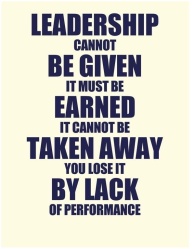 To complement the above on how leaders fail to appreciate the shadows they cast,
To complement the above on how leaders fail to appreciate the shadows they cast, 
 I repeatedly stumbled across them, relying on luck rather than seeking them out. Yet it always started the same way, you have to put yourself out there. To see who resonates with the way you make meaning of the world, whose energy matches your own.
I repeatedly stumbled across them, relying on luck rather than seeking them out. Yet it always started the same way, you have to put yourself out there. To see who resonates with the way you make meaning of the world, whose energy matches your own.
 The traditional path is still there for you to take, and run counter to this smart cut. You know like me though, the standard pace is for chumps, and seek growth hacks such as this to broaden your experience and network. It won’t just help you grow, it will help you get noticed. It’s both a push and pull platform where you help others and not just yourself. It’s designed so that when we can, we are able to send the elevator back down, filled with the knowledge that we have gained. We aren’t in competition here, we are part of a Nash equilibrium, looking to
The traditional path is still there for you to take, and run counter to this smart cut. You know like me though, the standard pace is for chumps, and seek growth hacks such as this to broaden your experience and network. It won’t just help you grow, it will help you get noticed. It’s both a push and pull platform where you help others and not just yourself. It’s designed so that when we can, we are able to send the elevator back down, filled with the knowledge that we have gained. We aren’t in competition here, we are part of a Nash equilibrium, looking to 

 A few of my favourite short bites were the concepts of;
A few of my favourite short bites were the concepts of; It was liberating being unshackled from the need to meet a self-imposed style of language which I commonly use in my work environment. Being more genuine (speaking human), and leading with riding the elephants in the room, was much more pleasurable and engaging for the group.
It was liberating being unshackled from the need to meet a self-imposed style of language which I commonly use in my work environment. Being more genuine (speaking human), and leading with riding the elephants in the room, was much more pleasurable and engaging for the group. Thoroughly recommend that for your next facilitation or initiative, that you consider Jen’s points in the podcast to level up your communication skills and ‘activate’ people.
Thoroughly recommend that for your next facilitation or initiative, that you consider Jen’s points in the podcast to level up your communication skills and ‘activate’ people.

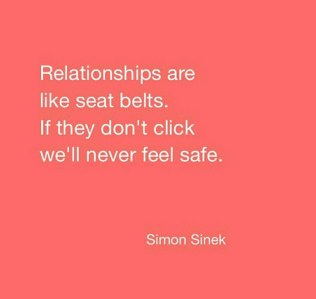 Simon Sinek put out a great comment – Relationships are like seat belt’s, they only work when they click – same with Safety. If you can’t form a relationship you won’t overcome the bystander effect.
Simon Sinek put out a great comment – Relationships are like seat belt’s, they only work when they click – same with Safety. If you can’t form a relationship you won’t overcome the bystander effect.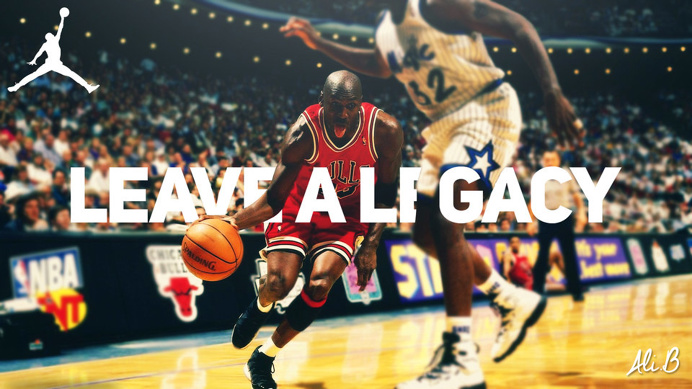
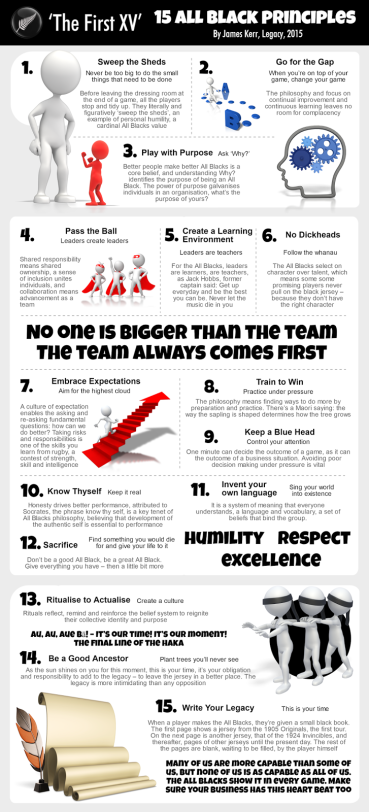


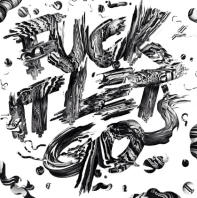 Once I read the single digit number, the stream of emotions from my ego was pretty loud, and hyper-critical of the whole notion using one variable to label someone’s love, sweat and tears, and using this as a variable for comparison with others. It reiterated my view that counting and measuring false idols to predict future performance is a fallacy, yet one which all too often pervades. Instead of asking the harder question (how do we measure knowledge, skill, ability and performance) which proves to be a much greater difficulty in answering, we substitute for an easier question – how many years have you had your bum in a seat.
Once I read the single digit number, the stream of emotions from my ego was pretty loud, and hyper-critical of the whole notion using one variable to label someone’s love, sweat and tears, and using this as a variable for comparison with others. It reiterated my view that counting and measuring false idols to predict future performance is a fallacy, yet one which all too often pervades. Instead of asking the harder question (how do we measure knowledge, skill, ability and performance) which proves to be a much greater difficulty in answering, we substitute for an easier question – how many years have you had your bum in a seat.
 BHP has come out
BHP has come out  Derek Sivers
Derek Sivers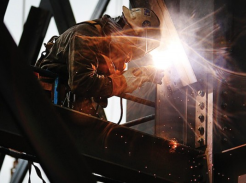 I would paint myself as a
I would paint myself as a 



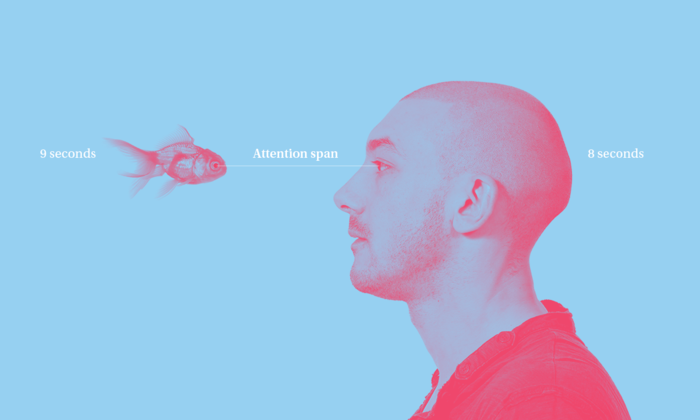
 This got me thinking as to how lessons learnt can be sustainably captured and remain useful for 1, 10 & 100 years within an organisation. What priming and jigsaw pieces need to shown to employees (or deep learning AI applications) for this to occur? Is it as simple as issuing a lesson learnt document for toolbox 😂 I have a hunch that the best concepts for this wicked problem intersect somewhere between systems theory, social psychology and semiotics? Or as
This got me thinking as to how lessons learnt can be sustainably captured and remain useful for 1, 10 & 100 years within an organisation. What priming and jigsaw pieces need to shown to employees (or deep learning AI applications) for this to occur? Is it as simple as issuing a lesson learnt document for toolbox 😂 I have a hunch that the best concepts for this wicked problem intersect somewhere between systems theory, social psychology and semiotics? Or as  All of the above, whilst the message is important to focus on, relies on you as the curator of knowledge to frame what the lessons learnt was. Will you rely on fear and loss prevention to motivate individuals to integrate the lessons learnt into their day or will you use awe, wonder, suspense and curiosity to fuel the communication message and medium?
All of the above, whilst the message is important to focus on, relies on you as the curator of knowledge to frame what the lessons learnt was. Will you rely on fear and loss prevention to motivate individuals to integrate the lessons learnt into their day or will you use awe, wonder, suspense and curiosity to fuel the communication message and medium? It’s created by a small group of people from
It’s created by a small group of people from 
 Unfortunately,
Unfortunately, 


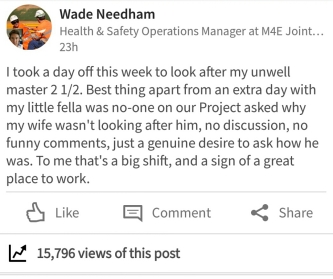 I shared a little snippet around taking a day off to look after my son this week on LinkedIn. Pretty fair to say it struck a chord with most who read it judging by the below, 24 hours after posting it
I shared a little snippet around taking a day off to look after my son this week on LinkedIn. Pretty fair to say it struck a chord with most who read it judging by the below, 24 hours after posting it
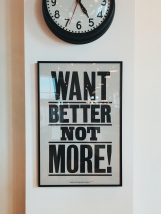 Whichever way you want to interact on social media I would much rather have a newsfeed
Whichever way you want to interact on social media I would much rather have a newsfeed 
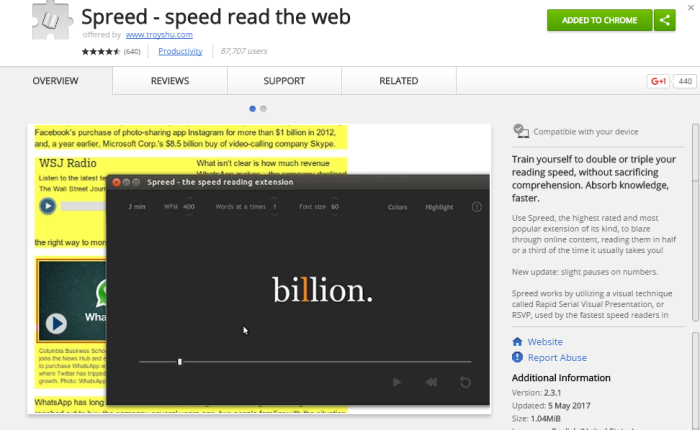
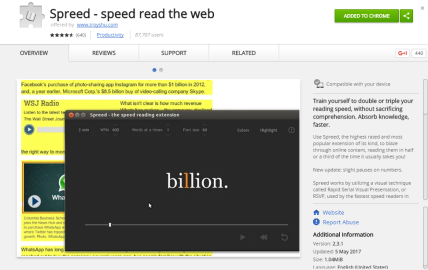
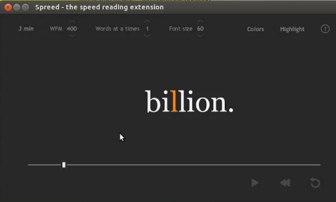


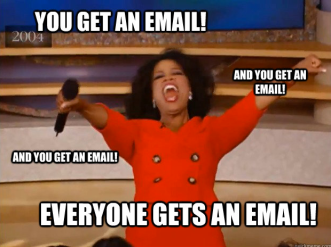


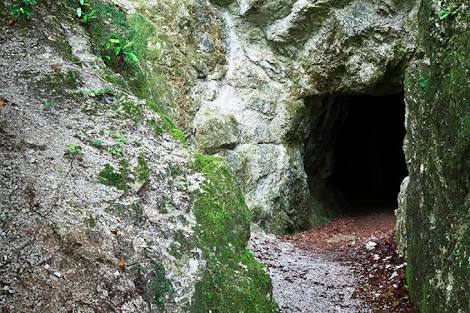



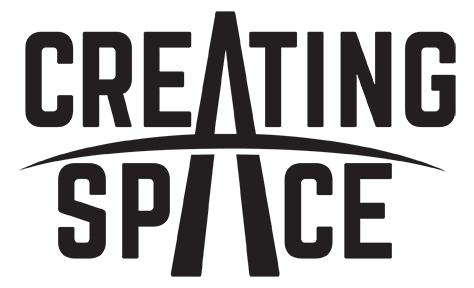
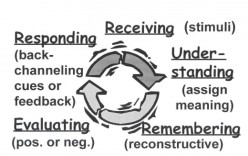 Often in support roles, we get caught up as ‘tellers’ regarding what should happen or what needs to be improved. It has become almost synonymous with ‘advising’. I’d challenge you to think critically about what an advising someone else actually is and what you are looking for in the relationship.
Often in support roles, we get caught up as ‘tellers’ regarding what should happen or what needs to be improved. It has become almost synonymous with ‘advising’. I’d challenge you to think critically about what an advising someone else actually is and what you are looking for in the relationship.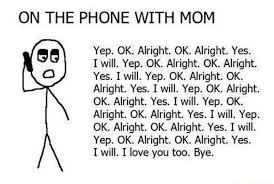 Too often I’ve seen (or done myself) Safety personnel take the role of ‘parent’ and attempt to force the other party into a child-like position (through invoking either fear, perceived moral superiority or future guilt) where they should listen and do, as the advisor has more knowledge. This strategy is a self-fulfilling prophecy which typically leads to conflict, as individuals don’t meet as trusted peers but rather as transactional colleagues, without a need for a mutually beneficial outcome and ongoing relationship.
Too often I’ve seen (or done myself) Safety personnel take the role of ‘parent’ and attempt to force the other party into a child-like position (through invoking either fear, perceived moral superiority or future guilt) where they should listen and do, as the advisor has more knowledge. This strategy is a self-fulfilling prophecy which typically leads to conflict, as individuals don’t meet as trusted peers but rather as transactional colleagues, without a need for a mutually beneficial outcome and ongoing relationship.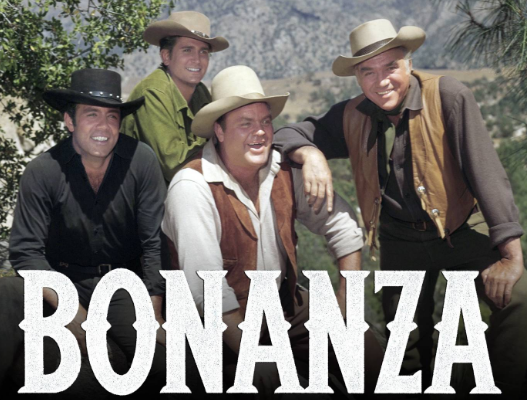
 sked the supervisor and his leading hand to place into their phones an alarm for 0950h each day. At this time the team would reflect, “Is anything we are doing currently (active condition) or have done (latent condition) that upon reflection makes us look like cowboys to others and ourselves and may cause harm?
sked the supervisor and his leading hand to place into their phones an alarm for 0950h each day. At this time the team would reflect, “Is anything we are doing currently (active condition) or have done (latent condition) that upon reflection makes us look like cowboys to others and ourselves and may cause harm?




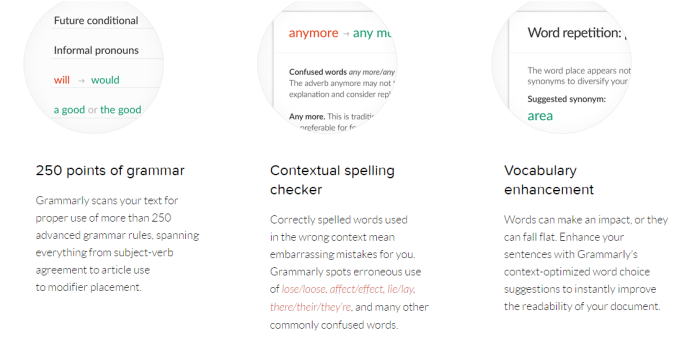

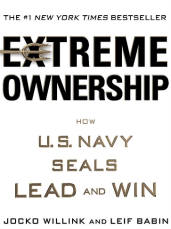

 Intriguingly, often I’ve found that very competent and experienced management personnel when placed in someone else’s area default to other indicators, outside of the work being performed, especially if there is a pre-existing relationship to determine the bar that the work is reviewed.
Intriguingly, often I’ve found that very competent and experienced management personnel when placed in someone else’s area default to other indicators, outside of the work being performed, especially if there is a pre-existing relationship to determine the bar that the work is reviewed. Most people acknowledge that part of the human condition is to make mistakes, it is nigh impossible to operate perfectly each time due to the ever increasingly complexity and complicatedness of the environment we interact with (include the self-made demands on ourselves). Rarely though do we move past acknowledgement to the point of actioning and then verbalising the why we review others actions.
Most people acknowledge that part of the human condition is to make mistakes, it is nigh impossible to operate perfectly each time due to the ever increasingly complexity and complicatedness of the environment we interact with (include the self-made demands on ourselves). Rarely though do we move past acknowledgement to the point of actioning and then verbalising the why we review others actions.


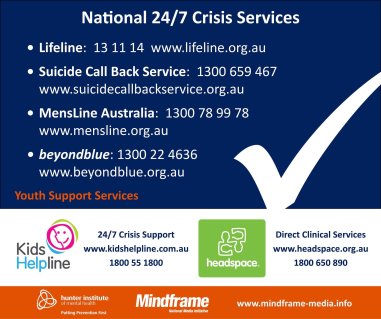

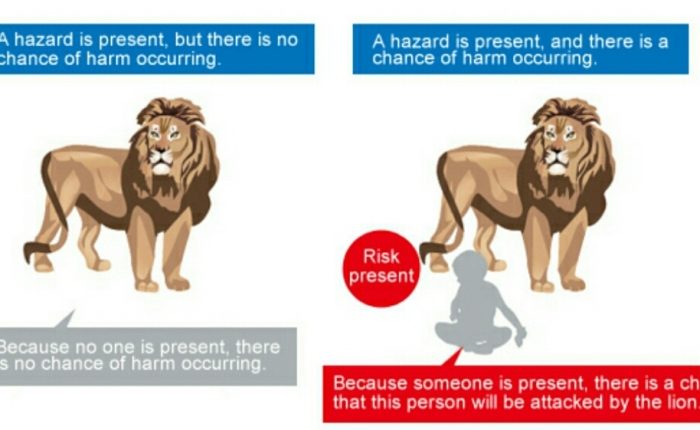
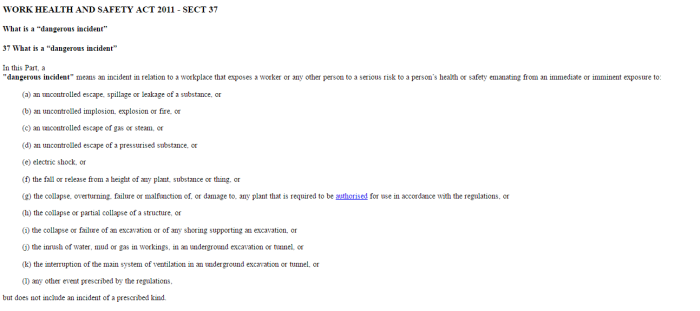
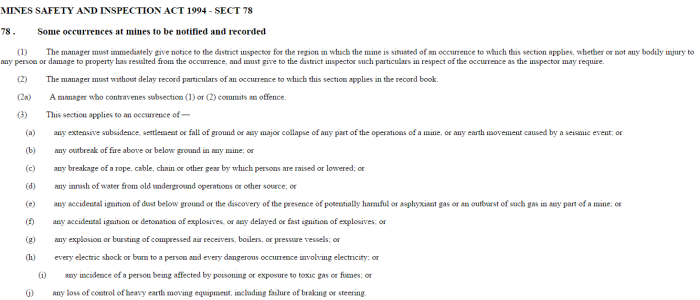

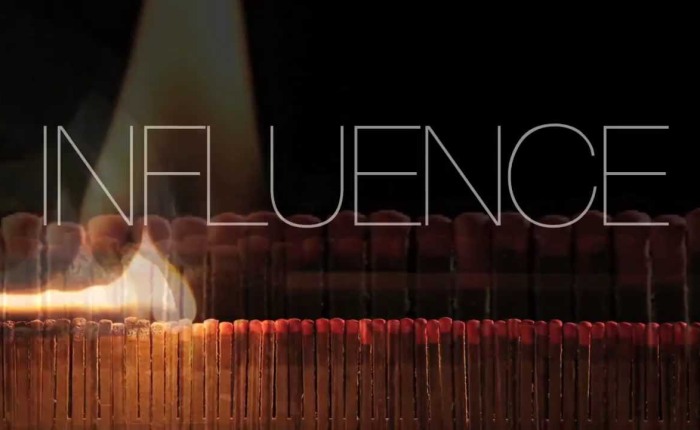
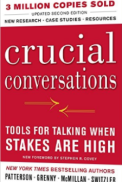 I read it on my second project as a Safety Advisor and it was immensely helpful in improving the relationships I had on the Project as well as allowing me to expand my circle of influence with my new found (and heavily practised and iterated!) skill.
I read it on my second project as a Safety Advisor and it was immensely helpful in improving the relationships I had on the Project as well as allowing me to expand my circle of influence with my new found (and heavily practised and iterated!) skill. I’ve reread it a number of times when I haven’t been as successful influencing someone as I would have liked, and it’s also great as a reminder or fixed coach you can refer back to.
I’ve reread it a number of times when I haven’t been as successful influencing someone as I would have liked, and it’s also great as a reminder or fixed coach you can refer back to.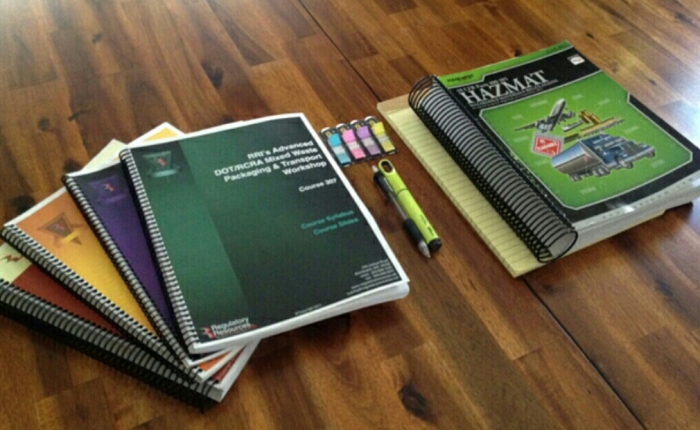

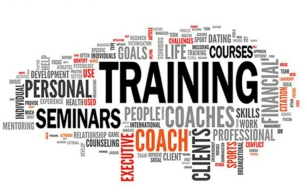








 To assist this, small cards folded over in a tent fashion with attendees names written on both sides help this process. Even encouraging people to draw a small picture of their interests will help with starting a conversation.
To assist this, small cards folded over in a tent fashion with attendees names written on both sides help this process. Even encouraging people to draw a small picture of their interests will help with starting a conversation.
